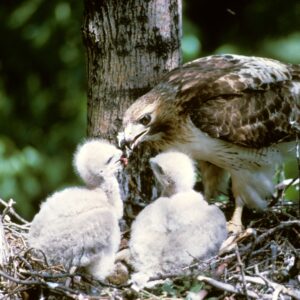
Bobcat (Lynx rufus)
Bobcats are a small, typically solitary, wild cat species found in the Death Valley area. They are about twice the size of a domestic cat, with distinctive tufted ears and short tails. Bobcats are generally elusive and tend to avoid human contact. They are most active at dawn and dusk, hunting for various prey, including rodents, rabbits, birds, and reptiles. In Death Valley, bobcats inhabit several different areas, including rocky hillsides, canyons, and desert scrub.

Bighorn Sheep (Ovis canadensis nelsoni)
These majestic animals are known for their impressive horns and are frequently spotted on the rocky hillsides of the park. In the Death Valley area, bighorn sheep are typically found in rocky, mountainous areas, where they can easily climb and navigate steep terrain. They are herbivorous and feed on various plants, including grasses, shrubs, and cacti. Bighorn sheep are highly adapted to life in the desert and can go for long periods without drinking water, obtaining much of the moisture they need from the plants they eat. They can also regulate their body temperature in extreme heat by seeking shade and panting to cool themselves.

Desert Tortoise (Gopherus agassizii)
These slow-moving reptiles are a threatened species. Desert tortoises are rarely seen. Desert Tortoises live alongside rocky hillsides, canyons, and desert scrub in the Death Valley area. They are most active during the cooler months of the year and hibernate during the hot summer months. Desert tortoises are well adapted to life in the desert, with a thick, scaly shell that helps them retain moisture and regulate their body temperature. Desert tortoises are primarily herbivores, feeding on various vegetation, including grasses, shrubs, and cacti. They are also known to be opportunistic eaters, sometimes eating insects.

Golden Eagle (Aquila chrysaetos)
These birds of prey can be seen soaring high above the park, hunting for game. Golden eagles are a large raptor species found in the Death Valley area. They are one of North America’s largest birds of prey, with a wingspan of up to 7 feet and a weight of up to 15 pounds. Golden eagles are powerful predators. They hunt small mammals and even larger prey like bighorn sheep and deer. They are also known to scavenge. They build their nests in rocky areas, typically on ledges or in crevices.

Kit Fox (Vulpes macrotis)
These small foxes are found throughout the park and are known for their bushy tails and playful demeanor. Kit foxes are about the size of a domestic cat, with distinctive, bushy tails and large ears. They are generally shy and elusive and tend to avoid human contact. In the Death Valley area, kit foxes inhabit numerous areas, including rocky hillsides, desert scrub, and sand dunes. Kit foxes are primarily nocturnal animals active at night, hunting for various prey, including rodents, rabbits, insects, and reptiles. They are highly adapted to life in the desert and can obtain much of the moisture they need from their food.

Mountain Lion (Puma concolor)
While mountain lions are rarely seen, they are known to inhabit the area and can occasionally be spotted. Mountain lions are large predatory cats that can be found in the Death Valley area, although sightings are rare due to their elusive nature. They are a top predator and play an essential role in regulating the population of other wildlife species. Mountain lions are solitary and territorial animals that typically hunt alone at night, feeding on prey, including deer, bighorn sheep, and smaller mammals like rabbits and rodents. They are skilled hunters and can take down game much larger than themselves.
